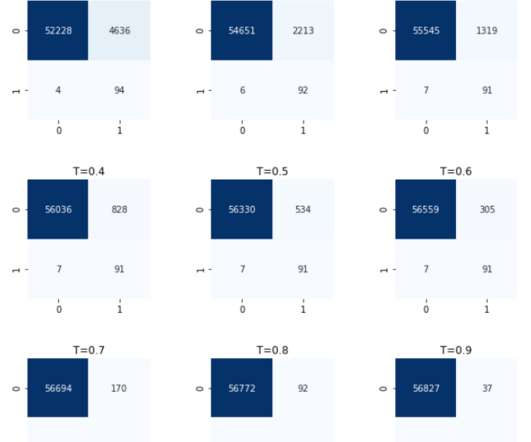Credit Card Fraud Detection using XGBoost, SMOTE, and threshold moving
Domino Data Lab
APRIL 21, 2021
Rules-based fraud detection (top) vs. classification decision tree-based detection (bottom): The risk scoring in the former model is calculated using policy-based, manually crafted rules and their corresponding weights. Let’s also look at the basic descriptive statistics for all attributes. from sklearn import metrics.













Let's personalize your content